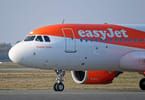Despite hard times in today’s financial world, tourism has been given hope in religion and faith-based travel. This travel segment has been boosted recently in Orlando, Florida at the World Religious Travel Expo and Education Conference organized by the World Religious Travel Association.
“Faith tourism has evolved to the point where a gathering of this magnitude is necessary for the industry to respond to the needs of today’s faith-based consumers,” said Kevin J. Wright, president of the World Religious Travel Association (WRTA), a leading network for shaping, enriching and expanding the reportedly $18 billion global faith tourism industry.
According to the United Nations World Tourism Organization, 300 to 330 million pilgrims visit the world’s key religious sites every year. It also said in 2005, tourist arrivals in the Middle East have increased at a much faster rate over the last five decades than in the rest of the world. The average annual increase in the Middle East was 10 percent.
While there are several factors behind this growth, religious tourism has arguably played a significant part by the fact that Saudi Arabia prides two of the holiest Islamic sites while Israel and Palestine comprise the Holy Land.
Prayers may have been answered in the last few years. Business boomed and faith travels became widespread. But how about in today’s times – with increased conflict in the Middle East coupled with the credit crunch that seems to plague the entire globe, are people willing to travel for the sake of faith? Will the Middle East remain a hotbed for this kind of tourism amid a crippling recession? Does the Middle East offer a cheaper alternative as tourism destination?
It seems like the market crash has been a blessing for Palestine. During the first half of 2008, inbound tourism increased by 120 percent compared with the same period last year, approaching the 1 million-tourist count before the year ends.
Dr. KhouloudDaibes, Minister of Tourism and Antiquities for Palestine said the Territory benefits from this global trend with the Middle East increasing rapidly faster than global growth. “This came with the rebound of tourism with the current situation and with the rebound of visitors who have been waiting to travel since 2000. The demand is very high,” said the tourism official born in Bethlehem and who lived in Jerusalem herself.
On boosting internal traffic from the Middle East into Palestine (which Daibes said politically means Jerusalem and historically Judea), it’s truly tough right now. “I must say it is still very difficult. We were not receiving tourists from the Arab countries and Middle East. The increase is based on the global trend but hopefully I believe the increase will be more pronounced once borders open between countries within the region. If it happens, we may not be able to cope with the demand even with current infrastructure in place,” she said.
“We are used to hosting pilgrims in the holy sites such as Bethlehem, Jerusalem and Jericho (considered one of the oldest human settlements dating back to 10,000 years ago). These key cities are living monuments including the Church of the Nativity – we live in and around these churches where our people practice faith. The experience of the tourists here is very unique,” said Daibes. She added the sites are not developed, and therefore are quite authentic. Due to this, it builds people’s understanding of what’s going on in the Holy Land and the general area.
Daibes reiterated that faith-based tourism can help achieve peace in their corner of the world in the Holy Land. “This area is longing for moral correctness. Palestine is an integral part of the Holy Land and the experience here can be enhanced through visiting all the important religious sites to promote Palestine with its unique destination and heritage,” she said.
Arie Sommer, Tourism Commissioner for North and South America, Israel Ministry of Tourism said in the last few years, the image and attitudes in the Middle East have changed dramatically. He said, “Because the region has become quiet and progressive, people have become comfortable traveling to the Middle East. From country to country, coming from Jordan and elsewhere, they move freely and travel safely.”
To my question on visas, Sommer said, “I don’t want to get into politics. But we are now granting entry and free access to the holy sites, and if there’s any problem Israel has tried to address this problem. Israel has recently announced it has made some policy changes regarding entry.” There are 2.7-2.8 million visitors who visited in 2007. They saw an increase of over 20 percent in ‘08 and expect more in ‘09. “More people are coming to the region despite the advisories. See how many people come to the region and to Israel? This means they know what they are doing,” he said.
With very little budget to promote its tourism features, Jordan sells itself different from all others. Malia Asfour, director for North America, Jordan Tourism Board, prides in over 200 religious sites in her country. She said people always walk away not thinking about Jerash and their remarkable experiences, but they come back feeling that the Jordanians have more to offer. “That the Jordanians are friendly, and that the Bedouins are hospitable…We are breaking down psychological barriers, bringing people together through peace through tourism and showing friendships. Our region has been a victim of misperceptions because of CNN and the media. We are wonderful people – that’s what we need to bring home.” Asfour said the JTB’s biggest issue is the security fear of Americans not being comfortable because of sheer misperceptions.
Egypt grabs the spotlight as well in this realm. ElSayed Khalifa, Egyptian Tourist Authority, Consul-director USA and Latin America, said with Egypt’s long history, religion forms Egypt’s cornerstone in people’s lives. “Religion shapes Egyptians’ way of thinking and lifestyle and our perception of the afterlife. When you visit Old Cairo today, you will be amazed to find a landmark within an area a square kilometer representing the three monotheistic religions – a synagogue, the Hanging Church and Ommayad’s first mosque ever built in Egypt. The houses built around the sites show how Egyptians thought about religions, how tolerant they are about the faiths and how peaceful they can co-exist. They believe in accepting each other. They are very open.” Almost every trip to Egypt is faith-based from trips to the pyramids to the Karnak and Luxor Temples, he said.
“In Egypt, we have seen steady increases in arrivals from all markets, especially the US. Last year, some 11 million tourists visited – a record figure to us. It is our intention to raise the numbers 1 million per year. This year, we project to have the US traffic exceed 300,000. But with the economic crisis, it will affect, no doubt, the travel industry. So far, we still are not impacted. Maybe, we’d see the effect next year. But we really don’t know. Everything’s uncertain,” he said adding he does not have statistics as to the breakdown of tourists coming for religious travels. However, he believes that all who go to Egypt travel for faith one way or another.
On cashing in on the Dubai boom in tourism, Daibes said: “We’ve not seen a trend yet with people who flying into Dubai and the oil-rich Gulf States entering Palestine later. But we target Muslims coming from Europe and the entire world. We are open to anybody. We are open to the whole world because we have sites important to the three religions and the accumulation of great history, civilization and culture. We would like to see our part of the world receive guests without restrictions,” she said.
Since pilgrimage forms 95 percent of Palestine tourism, promotion is essential to the ministry. “Introducing Palestine as a destination will be a short-term strategy in the US for now as we focus on Russia and the CIS. The US financial crisis will not saddle our program. Regardless, there’s a huge number of Americans still going to the Holy Land visiting the Territory, Israel and other countries,” she added.
The Department of Commerce, US Office of Travel and Tourism Industries cited that from 2003, Americans have doubled overseas travel for religious reasons. In 2007 alone, over 31 million people traveled – showing 906,000 more Americans traveled to religious sites reflecting 2.9 percent increase over 2006.
WHAT TO TAKE AWAY FROM THIS ARTICLE:
- It also said in 2005, tourist arrivals in the Middle East have increased at a much faster rate over the last five decades than in the rest of the world.
- But how about in today's times – with increased conflict in the Middle East coupled with the credit crunch that seems to plague the entire globe, are people willing to travel for the sake of faith.
- “Faith tourism has evolved to the point where a gathering of this magnitude is necessary for the industry to respond to the needs of today's faith-based consumers,” said Kevin J.






















